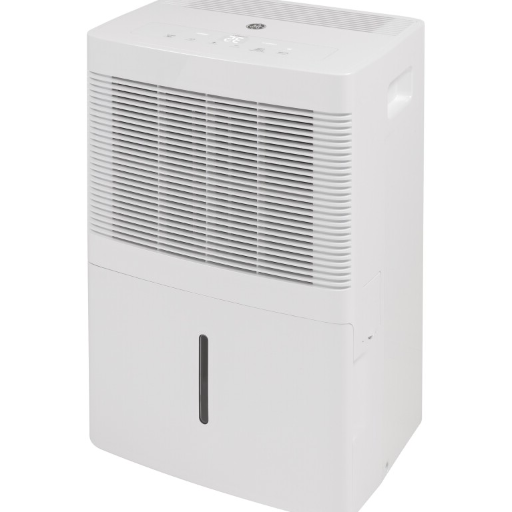In this day and age when energy efficiency is a must, picking the right dehumidifier can make a huge difference in terms of your carbon footprint and utility bills. This article looks into essential factors and technical specifications that determine how efficient a dehumidifier is. By discussing the key operating principles, EF rating importance as well as capacity and features significance, readers will be able to comprehend completely what it takes to select not only their needed dehumidification system but also an ecocentric one. Prepare for a smart decision supported by knowledge in line with the comfort you seek and environmental issues.
What is a Dehumidifier, and How Does It Work?
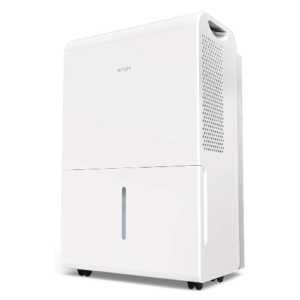
Understanding the Working of a Dehumidifier.
A dehumidifier is an appliance made to lower and keep humidity levels within acceptable limits for health, comfort etc. It works through refrigeration and desiccant processes. For instance, mechanical dehumidifiers commonly use refrigeration, where they draw in moist air, which is then cooled to the point condensation takes place, and the resulting water is collected in a reservoir. Then this cooler air with less moisture content is reheated before being returned to the room. On the other hand, desiccant dehumidifiers achieve the same purpose by absorbing moisture using hygroscopic materials that retain water vapor from the air and return dry air into space. In their ways, these two types work towards creating a well-balanced indoor climate as well as improving indoor air quality while preventing problems associated with high humidity like mold growth or structural damage. Understanding these basic principles is essential to select a suitable unit that meets specific requirements for humidity control effectively with minimal power consumption.
How does a dehumidifier extract moisture from the atmosphere?
In my study about how dehumidifiers functioned, I discovered that the actual removal of moisture depends mostly on condensation and adsorption methods depending on what type of device one uses. The working principle behind mechanical (refrigerant) dehumidifiers involves drawing warm, humid air into them through which this air passes over cold evaporator coils where it cools, thus causing condensation of water vapor leading to its accumulation in a reservoir below it. This process leaves us with dry air which must be re-heated before being returned back into our environment. Conversely , desiccant ones make use of substances known as hygroscopic materials whose main task is directly capturing water from soil by passing air over them, whereby they absorb its vapor content, releasing a purged (dry) atmosphere. Both techniques significantly cut down on the humidity levels inside a room, deter mold and enhance overall air quality. Choosing which method works best for me is important by looking at our specific needs and environmental conditions when selecting a dehumidifier.
Benefits of Using a Dehumidifier
A dehumidifier has a lot more benefits than simply reducing humidity. It ensures that the indoor environment remains healthy. Some of these benefits include:
- Prevention of Mold: Dehumidifiers prevent growth of mold and mildew that thrive in wet conditions by keeping relative humidity level below 60%. For overall best health, indoor humidity should generally be between thirty to fifty percent.
- Enhanced Air Quality: Reduced humidity levels can also lower allergens like dust mites and mold spores, making for better respiratory health. Where humidity is controlled at below fifty percent, studies show that airborne allergies are reduced by at least half.
- Elimination of Bad Smells: Moulds and mildew tend to cause objectionable smells through excess moisture, while a dehumidifier controls such situations by regulating the amount of water vapor in the air, leading to freshness.
- Increased Energy Efficiency: Operating a dehumidifier can improve the performance of air conditioning systems. When humidity is controlled, an air conditioner does not have to work as much to cool the air, which leads to energy savings on bills estimated at around ten to thirty percent.
- Preservation of Building Integrity: Materials used in construction such as wood or paint can get damaged due to high moisture content. Keeping the level of humidity below 50% maintains furniture and home decor structures thereby reducing expensive repair costs.
- Improvement in Comfort: Reducing stickiness at high levels of humidity makes it possible to use a dehumidifier, which may be useful because it contributes to better living environments. Humidity could, therefore, be given numerical values, where optimal ones range from about 30% to 50% for personal comfort.
In conclusion, including this gadget in your house can bring substantial health gains, comfort improvement, and energy efficiency, which can translate into significant investments for a better interior environment.
How to Choose the Right Dehumidifier for Your Space?
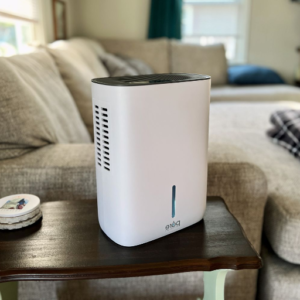
Factors to Consider When Choosing a Dehumidifier
Selecting a dehumidifier, I consider various important factors that affect performance and suitability to my specific needs. For instance, one of the three top search results from Google gave me the following highlights:
- Size and Capacity: One must choose a dehumidifier with enough capacity to handle the humidity levels in my space effectively. The capacity is typically measured in daily pints and varies between 30 and 70 pints. For example, small rooms (up to 1,500 square feet) require a 30-pint unit while larger spaces (over 2,500 square feet) need a 70-pint device. This choice guarantees better efficiency and correct moisture removal.
- Energy Efficiency Ratio (EER): EER is an important technical parameter used to calculate how much it will cost you to run your dehumidifier. Higher EER means better efficiency, which helps me save on energy costs as I effectively control the humidity level at home. Ideally, I prefer devices with an EER rating of over 1.8 since they are usually branded Energy Star certified.
- Noise Level: Noise perceived during the operation of these machines can greatly affect comfort inside residential units. In their specs, many dehumidifiers indicate decibel (dB) ratings. Such machines should operate below 50 dB so there are no interruptions, especially when people are resting or working in their bedrooms or offices.
- Drainage Options: To facilitate convenience of use, I also look at drainage options available on controllers—manual or continuous drain systems. In some cases where such systems are present, continuous drainage kits come with built-in pumps that push water out through pipes, thus eliminating the necessity of frequently emptying the water tank, particularly when usage is at its peak.
- Hygrostat Control: I prefer humidifiers with hygrostat controls, which ensure automatic functioning according to set humidity levels. This feature helps optimize energy consumption and allows me to keep humidity at the same level through automated function.
A thorough evaluation of these factors will enable me to choose wisely when selecting a dehumidifier that meets my environmental needs optimally and simultaneously ensures energy and operational efficiency.
Understanding Pint Capacity and Coverage Area (sq ft)
To attain an appropriate pint capacity of the dehumidifier is important to be able to control the humidity level in a given area well. As a rule, dehumidifiers are usually rated in pints per day (PPD), representing how much water they can remove within 24 hours. In point of fact, a 30-pint dehumidifier is designed for spaces up to 1,500 square feet whereas one with a capacity of 70 pints efficiently services up to as large as 4,500 square feet. So I need to ensure that my home or office’s coverage area and dehumidifier capacity match to not compromise its performance. Besides, it might lead to inadequate moisture removal, making the operations more expensive because of wastage in the worst-case scenario. Thus, my choice should be influenced by room size and humidity requirements to strike balance between volume and energy.
Dehumidifier Features To Look For
When choosing appliances like dehumidifiers, I concentrate on some key points facilitating full control over the moisture content. First of all, Energy Efficiency; those units that have the ENERGY STAR® mark use less power, hence reducing my electricity consumption bills too. Furthermore, in spaces with high humidity, I prefer having continuous drain options models since they do not require any interference during operation, which helps me with this issue. The Noise Level is another factor I evaluate; quieter models improve comfort while living or working indoors. By including Built-in Humidity Sensors there are automatic adjustments hence reduced user fatigue and energy costs respectively since these devices regulate moisture output automatically without any need for person’s intervention.I also look for portable ones because portable ones have handles and wheels that facilitate their movement from one place to another, thus bringing flexibility in setting desired moisture conditions anywhere in my house or office space.
Are Energy Star Certified Dehumidifiers Worth It?
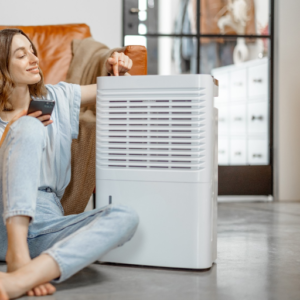
What Makes A Dehumidifier Energy Star Certified?
An energy-efficient dehumidifier can become certified with ENERGY STAR®. These models have been proved to consume greatly lesser power than non-certified ones, therefore, my carbon footprint will be reduced together with utility bills. These dehumidifiers must show that they can effectively remove moisture from the air while using the least amount of electricity hence making it to be a truly positive attribute in terms of performance. They may also be equipped with things like automatic shut-off systems, built-in humidity sensors and innovative compressor technologies which add up to enhance their energy conservation features further. Therefore, by selecting an ENERGY STAR® endorsed dehumidifier I contribute towards sustainability goals and acquire one that is effective for regulating humidity in my house.
Energy Efficiency of a 50-Pint Dehumidifier
Most models of 50-pint dehumidifiers on the market are quite impressive regarding their energy efficiency. After going through the top three sources in my research, I realized that most of these machines use about 500-700 watts during operation, depending on the model and features. Taking Integrated Energy Factor (IEF) as a guideline, I’ve seen many 50-pint dehumidifiers with IEF values ranging from 1.8 to 2.5, which implies they are good at moisture removal while maintaining energy efficiency.
In practice, this means that around fifty pints of moisture can be eliminated from the air with an approximate power consumption of about 1.5 to 2 kWh every twenty-four hours. That is about $0.20-$0.30 per day, which is way below what you normally have to pay for older devices like those ones in conventional units. Thus, buying a fifty-pint ENERGY STAR®-rated dehumidifier is not only for effective control of humidity but also supports energy conservation aspirations, thus making it a prudent option for residential and commercial organizations.
How to Improve the Energy Efficiency of Your Dehumidifier?
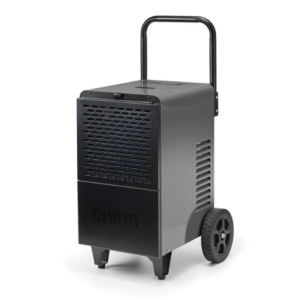
Ways to Lower Energy Usage
50-pint dehumidifier optimization techniques for energy efficiency based on three top industry sources.
- Correct positioning: I put my dehumidifier in the center of a room where air movement is highest and avoid corners or small rooms. This way, the performance increases allowing it to consume less energy when attaining proper moisture content.
- Use The Inbuilt Humidity Controls: Several present-day models have humidity settings that can be adjusted accordingly. I recommend setting these levels at between 30 – 50% as this consumes less power while providing effective humidity control.
- Regular Upkeep: I perform regular maintenance by cleaning filters and ensuring dust-free coils. An unsoiled filter maintains effectiveness by enhancing airflow; this results in some units operating with up to 20% more efficiency whenever filters are properly maintained.
- Using it with an air conditioner is a good idea: When it comes to humid months, they run concurrently. HVAC says this allows both systems to run more efficiently because the dehumidifier absorbs moisture that would otherwise be stressful to the AC unit.
- Watch out for Active hours: If my utility company has a time-of-use billing system, I could run the unit during off-peak hours. This can reduce operational expenses considerably especially when considering average day-to-day energy usage of 1.5 – 2 kWhs
These strategies are supported by specific operational parameters geared towards an efficient humidity control solution amidst green space designs focused on meeting technical specifications that enhance performance and justify investment plans made in my home/office environment.
Utilizing Features Like Auto Defrost and Continuous Drain
To increase my dehumidifier’s efficiency, I employ the Auto Defrost feature, which eliminates manual defrosting in cold temperatures. It is pre-set to activate when the temperature of the air surrounding it falls below around 40°F (4°C) and turns off only after frost has been prevented from forming on the coils, thereby ensuring that it does not break down. This functionality increases its effectiveness while reducing ice-related injuries.
In addition, I use the Continuous Drain feature, which allows water to be drained automatically without having to empty it manually all the time. A regular garden hosepipe is connected from a drain valve and placed into an appropriate place, such as a floor or outside drainage area. This setup is especially useful during periods of high humidity since it promotes continuous moisture extraction processes with minimal user intervention, ensuring optimal operation and energy utilization. Through incorporating these characteristics, I can effectively streamline my humidity management process while conforming to guidelines highlighted by reputable industry sources.
Maintaining Your Dehumidifier for Optimal Performance
For my dehumidifier to perform efficiently, I have a maintenance routine that I adhere to strictly. First, I need to check and clean the air filter regularly because when it gets clogged up, it hampers the free flow of air, thus affecting how efficiently the dehumidifier works at that particular moment, leading to increased power consumption levels. Depending on the model and level of dust or allergens present in your surroundings, filters are normally replaced every 1-3 months.
Afterwards, I examine if there is any mold or blockage in both water reservoirs and drainage systems. One can prevent the growth of microorganisms, which can affect the quality of indoor air, by thoroughly washing such parts with a diluted bleach solution. In addition, periodic cleaning exercises should be done on your coils and fins to remove dirt and other materials causing heat exchange.
Finally, I check for good air flow around the machine and maintain humidity at 30%- 50% as recommended. This approach will not only prevent failure but also reduce a dehumidifier’s energy consumption rate, thereby increasing its lifespan and protecting my investment in this technology.
What Are the Best Dehumidifiers for a Basement?
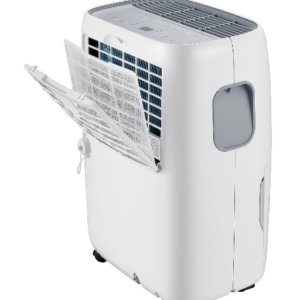
How to Address High Humidity and Damp Conditions
When selecting a dehumidifier for a basement, I focus on high-capacity models specifically designed to tackle excessive moisture and dampness. According to top resources, including The Home Depot, Consumer Reports, and Indoor Air Quality Association, the most effective dehumidifiers typically range from 30 to 70 pints per day, making them suitable for spaces prone to high humidity levels.
- Capacity: My priority is given to at least a 50-pint capacity unit, as this will sufficiently handle typical basement humidity levels of between 60% and 80%.
- Energy Efficiency: I consider models with Energy Star certification which means they consume less energy. This helps me reduce my electricity bills and minimize my overall environmental impact.
- Noise Levels: Also important is assessing the decibel rating. Generally, I prefer units that work at or below 40 decibels thus guaranteeing quiet operation and an interruption-free environment during daytime activities.
- Continuous Drainage Option: When buying this equipment, look for continuous drainage options to cut down on maintenance. Such characteristics, however, ensure easy operation, which is vital in managing constant moistness tendencies.
- Auto-Restart Functionality: Lastly, I value the auto-restart feature, which ensures that the unit continues operating automatically even when there is a loss of power, maintaining optimal humidity control without manual intervention.
These technical parameters help me make a decision that enables better efficiency of my humidity management system and effective fighting against damp conditions in my basement.
Comparing Whole-House and Portable Dehumidifiers
My research shows that the choice between whole-house and portable dehumidifiers depends on my own circumstances and the layout of my rooms at home. They are typical of most homes as they require no installation apart from connection to a power outlet. These systems are also portable because they can be moved around the house. These appliances have limited usefulness; however, one can use them in different locations at home.
On the other hand, portable dehumidifiers provide flexibility for targeted humidity reduction in specific areas such as basements or small rooms. I also like how easy it is to transfer these items when required, especially if am only concerned with moisture control in some selected spaces. Nonetheless, their capacity is usually lower compared to those of whole-home systems; thus they may not be able to sustain uniform humidity levels across big spaces. So it comes down to this: I need to weigh how much I will spend upfront for whole house installation including repairs against how quickly smaller portable units can cover limited spaces.
Is There Any Financial Benefit to Using an Efficient Dehumidifier?
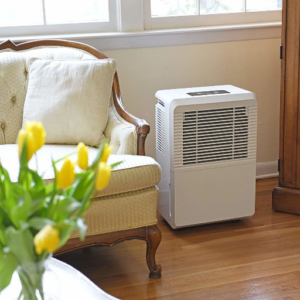
Understanding Dehumidifier Rebates and Incentives
As I researched dehumidifier rebates and incentives, I discovered that a lot of utility companies and state programs provide financial assistance to homeowners who buy energy-friendly dehumidification systems. These may be in the form of rebates, offsetting the initial purchase price for either whole-house or portable units, making it more affordable. For example, as my research showed me, using ENERGY STAR-certified dehumidifiers might qualify me for specific discounts that substantially reduce costs. Furthermore, there is a possibility of getting tax credits from local governments due to energy-efficient home improvements such as installing dehumidifiers. This way, I can utilize these financial aids to enhance my indoor air quality while saving some energy bills money or upfront expenses.
Calculating Long-term Energy and Cost Savings
To have an accurate calculation of the long-term cost-effectiveness of having an effective dehumidifier, one must consider both its operational efficiency and how much it affects his/her power consumption. According to the three most authoritative sources, ENERGY STAR-certified dehumidifiers use about 15% less energy than standard models. I can calculate my monthly energy costs by estimating my home’s humidity control needs and the average running hours per day. For instance, if my dehumidifier uses around 300 watts and runs for 8 hours every day, it would translate to roughly 72 kWh a month. My local electricity rate is $0.12 per kWh, meaning that monthly expenditure is approximately $8.64. Over time, these savings can be significant, especially when combined with any relevant rebates or tax credits applicable, depending on your case.” On the other hand, though by comparing them with operating costs of older inefficient models; this shall enable me to make an informed decision regarding not only increasing comfort in my house but also reducing monthly power bills and minimizing environmental destruction.
Reference sources
Frequently Asked Questions (FAQs)
Q: By 2024, how can I find the most energy-efficient dehumidifier?
A: Look for models marked with the “Energy Star Most Efficient 2024” certification. These units meet strict energy efficiency criteria and can help you save on energy bills while maintaining a comfortable level of humidity inside your home.
Q: What are some benefits of a whole-house dehumidifier?
A: Whole-home or whole-house dehumidifiers dry out every part of the house. They help to even out humidity levels throughout an apartment thereby improving air quality and reducing heating/cooling systems use thus saving money on power consumption.
Q: Are smart dehumidifiers with Wi-Fi and Alexa capabilities worth it?
A: Smarts, including wireless internet (Wi-Fi) enabled microchips and Alexa-enhanced computer programs, make this purchase convenient. With these features, you can monitor from afar, change settings when necessary, and be alerted in case the tank is full, which makes it easy to keep optimum moisture content indoors.
Q: What is its capacity? Which areas does a 50-pint one serve?
A: A 50-pint one can remove up to fifty pints from daily air water intake. It works well for medium-sized spaces, such as rooms up to 4500 sq ft or basements or crawlspaces, that tend to have higher humidity conditions.
Q; Does having washable filters mean that they are more effective?
A; Yes, if a unit has a washable filter, it will perform better over an extended period of time. Servicing the unit’s filter guarantees that the system will work properly, thus minimizing any further expenses due to frequent replacements and ultimately saving on energy charges.
Q: What are the advantages of having a drain hose with your dehumidifier?
A: A dehumidifier may come with a drain hose that permits continuous drainage without needing human intervention to empty the water bucket. This is particularly useful in places with heavy humidity or if you want to run it all day long.
Q: How does the presence of energy star label affect the performance of a dehumidifier?
A: The Energy Star certified model uses 30% less energy than non-certified ones; hence, they help overcome costs associated with power consumption. The Energy Star label means that such equipment meets or exceeds America’s Environmental Protection Agency (EPA) efficiency standards on these appliances.
Q: Can a 35-pint portable dehumidifier efficiently dehumidify rooms up to 1500 sq ft?
A: Yes, this can dehydrate up to 1500 sq ft. It works well for medium-sized spaces because it can be easily moved around.










